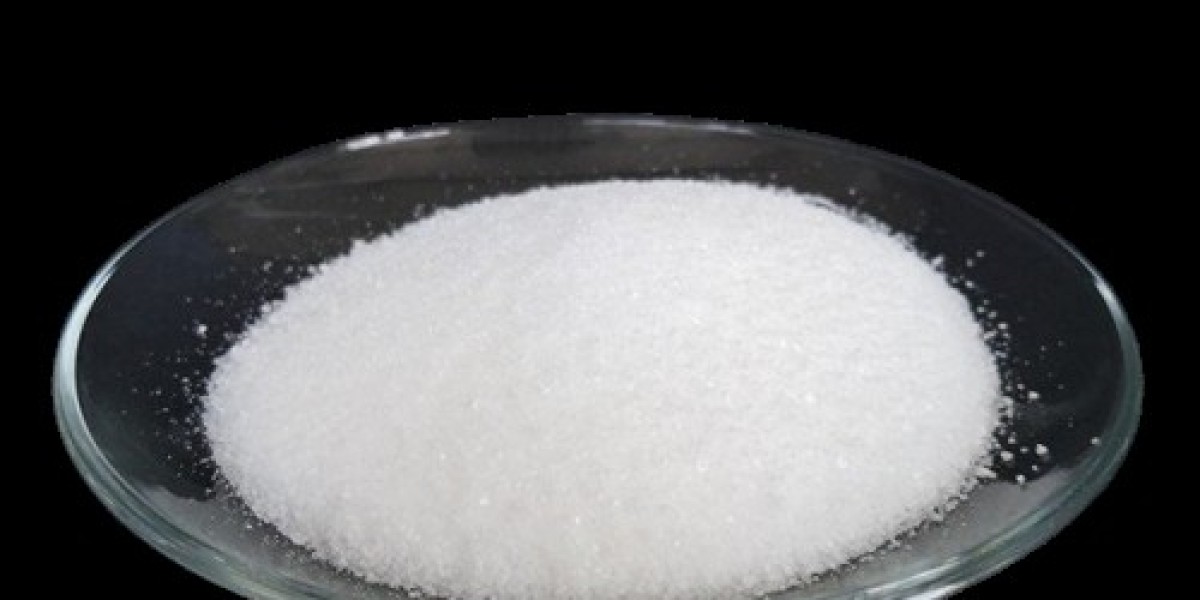Silicates are a class of compounds that contain oxygen and silicon, which are essential elements in numerous industries, from construction and automotive to agriculture and electronics. Silicates, including sodium silicate, potassium silicate, and calcium silicate, play a critical role as binders, detergents, adhesives, and catalysts, among other applications. The price of silicates is influenced by various factors, including raw material costs, energy prices, production methods, and supply chain dynamics.
In this article, we will explore the key factors driving silicates price trend analysis, their role in different industries, and the market outlook for the coming years.
What Are Silicates?
Silicates are compounds made from silicon and oxygen, often combined with metals like sodium, potassium, calcium, and magnesium. They are produced through a variety of methods, including the fusion of sand and alkalis like sodium carbonate. Silicates are commonly found in nature as minerals, such as quartz, feldspar, and mica, but are also synthetically produced for various industrial applications.
Types of Silicates
- Sodium Silicate: Often referred to as water glass, it is used in detergents, adhesives, paper production, and as a binder in foundries.
- Potassium Silicate: Used in agriculture as a pesticide and plant growth enhancer, as well as in coatings and adhesives.
- Calcium Silicate: Found in the manufacture of cement, insulation materials, and fireproofing products.
- Magnesium Silicate: Used in ceramics, cosmetics, and as a filler in plastics and rubber.
The price of silicates, like many industrial commodities, is largely driven by the underlying raw materials, production processes, and demand from various sectors.
Key Factors Influencing Silicates Prices
1. Raw Material Costs
Silicates are derived from readily available raw materials like sand, sodium carbonate, potassium carbonate, limestone, and magnesium. Fluctuations in the prices of these raw materials significantly affect silicate production costs. The price of sand, for example, can vary depending on regional availability and mining regulations, while the cost of sodium carbonate (soda ash) depends on factors such as global supply and demand dynamics.
Sand and Silica: Sand is the primary raw material used in the production of sodium silicate and other silicate compounds. The global sand market has faced increasing demand due to booming construction activities, leading to price hikes in some regions.
Soda Ash: Soda ash is produced from sodium carbonate and is essential for producing sodium silicates. As global demand for soda ash rises, it drives up the cost of silicates.
2. Energy Costs
The production of silicates, particularly sodium silicate, involves high-temperature processes, which require a significant amount of energy. The cost of natural gas, electricity, and other energy sources can impact production costs, making energy prices a crucial factor in determining silicate prices. Price fluctuations in energy markets, such as oil and gas prices, often correlate with changes in silicate prices.
For instance, in regions where energy is expensive, such as Europe, manufacturers may face higher costs, leading to higher silicate prices. Conversely, energy price reductions or more efficient energy use in production could reduce the cost of silicates.
3. Demand from End-Use Industries
Silicates serve as essential raw materials in a wide range of industries. The demand for silicates is therefore directly linked to the health of the industries they support. The primary sectors that drive demand for silicates include:
Construction and Cement: Silicates are key components in cement production, and their demand tends to follow construction industry trends. As global infrastructure development, especially in emerging economies, continues to grow, the demand for silicates increases.
Agriculture: Potassium silicate is used as a pesticide and fertilizer additive, providing essential nutrients to plants and enhancing resistance to diseases. Growth in the global agriculture sector, especially in emerging markets, can push up demand for silicates.
Automotive and Electronics: Silicates are used in the production of glass and ceramics, which are essential materials in the automotive and electronics industries. As technology and automotive production ramp up, demand for silicates in these sectors also increases.
Detergents and Cleaning Products: Sodium silicates are commonly used in laundry detergents and other cleaning products. As consumer demand for these products fluctuates, so too does the demand for silicates.
Enquire For Regular Prices: https://www.procurementresource.com/resource-center/silicates-price-trends/pricerequest
4. Supply Chain and Logistics
Like many industrial products, silicate prices are influenced by supply chain dynamics. Disruptions in global trade, transportation bottlenecks, or interruptions in the supply of key raw materials can cause price volatility. For example, the COVID-19 pandemic caused disruptions in manufacturing and supply chains, leading to delayed shipments and increased transportation costs. Such disruptions often result in price increases across many industrial sectors, including silicates.
In addition, regional supply constraints or overcapacity in certain countries can impact price trends. For instance, if a major silicate-producing country faces logistical or political challenges, it can reduce supply and trigger price hikes in the global market.
5. Environmental and Regulatory Factors
Environmental regulations, such as emissions standards and waste disposal regulations, can increase production costs for silicates. For example, strict environmental standards on sand extraction or mining practices can limit the supply of certain raw materials used in silicate production, leading to price fluctuations.
Governments and industries are also increasingly focusing on sustainability and green practices. This trend is creating demand for more sustainable silicate production methods, which may require higher upfront costs but can yield longer-term benefits in terms of cost savings and environmental impact. Compliance with green standards and certifications can also affect the overall cost structure.
6. Currency Fluctuations
Since silicates are traded internationally, currency exchange rates can significantly impact their prices. For example, the value of the US dollar against other currencies, such as the Euro or the Chinese Yuan, can affect the cost of importing or exporting silicates. A strong US dollar makes silicates more expensive in countries with weaker currencies, potentially reducing demand in those regions and impacting overall market dynamics.
Recent Price Trends of Silicates
1. 2020-2021 Price Surge
During the pandemic, silicate prices saw notable increases as manufacturing sectors around the world faced disruptions. The initial lockdowns and supply chain issues led to delays in production and shipping, driving up costs for silicates. As economies began to recover, demand surged, particularly in construction, agriculture, and manufacturing, which further boosted prices.
2. Price Stabilization in 2022
In 2022, silicate prices began to stabilize after the initial shock of the pandemic. With improved supply chain logistics, increased production capacity, and a recovery in industrial output, prices saw a slight decrease from the peaks reached in 2021. However, regional discrepancies remained due to differing recovery rates in key markets.
3. 2023 Price Volatility
In 2023, silicate prices showed volatility as raw material costs continued to fluctuate. Energy price increases, particularly in Europe, combined with increased demand for silicates in emerging markets, led to price hikes. On the other hand, some regions saw a slight dip in prices due to a slowdown in demand for certain industrial applications, particularly in developed countries facing inflationary pressures.
Outlook for Silicates Prices
1. Continued Demand from Key Sectors
As industries like construction, automotive, and agriculture continue to expand, demand for silicates is expected to rise. The ongoing growth in infrastructure projects, particularly in emerging economies, will continue to drive the need for silicate products, including sodium silicate for cement production and potassium silicate for agricultural use.
2. Energy Price Impact
Energy prices will remain a key factor in determining the price of silicates. As countries transition to more sustainable energy sources, production costs may fluctuate based on the availability and cost of renewable energy. Any significant changes in global energy markets will likely have a direct impact on silicate prices.
3. Environmental Concerns and Sustainability
The shift towards more sustainable and eco-friendly industrial practices will continue to shape silicate production costs. Companies that invest in green technologies may face higher initial costs, but those that adapt to the evolving environmental standards will be better positioned in the long run.
4. Regional Price Discrepancies
Global supply chain dynamics, geopolitical tensions, and varying regulations in different countries will result in regional price differences. Countries that are major producers of key raw materials for silicates, such as sand and soda ash, will have a competitive advantage in keeping prices lower. However, countries facing supply chain disruptions or stricter regulations may see higher costs. Silicates play a vital role in various industries, and their price trends are influenced by a complex mix of raw material costs, energy prices, demand from key sectors, and environmental regulations. Understanding these drivers can help businesses anticipate price fluctuations and make informed decisions when sourcing silicates.
The outlook for silicates remains positive, with demand expected to continue growing across construction, agriculture, and manufacturing industries. However, price volatility driven by energy markets, supply chain disruptions, and environmental concerns means that businesses will need to remain agile in managing their silicate procurement strategies.
By staying informed about market trends and global economic factors, companies can better navigate the dynamic silicates market and secure a competitive advantage in their respective industries.
Contact Us:
Company Name: Procurement Resource
Contact Person: Leo Frank
Email: sales@procurementresource.com
Toll-Free Numbers:
- USA & Canada: +1 307 363 1045
- UK: +44 7537171117
- Asia-Pacific (APAC): +91 1203185500
Address: 30 North Gould Street, Sheridan, WY 82801, USA








